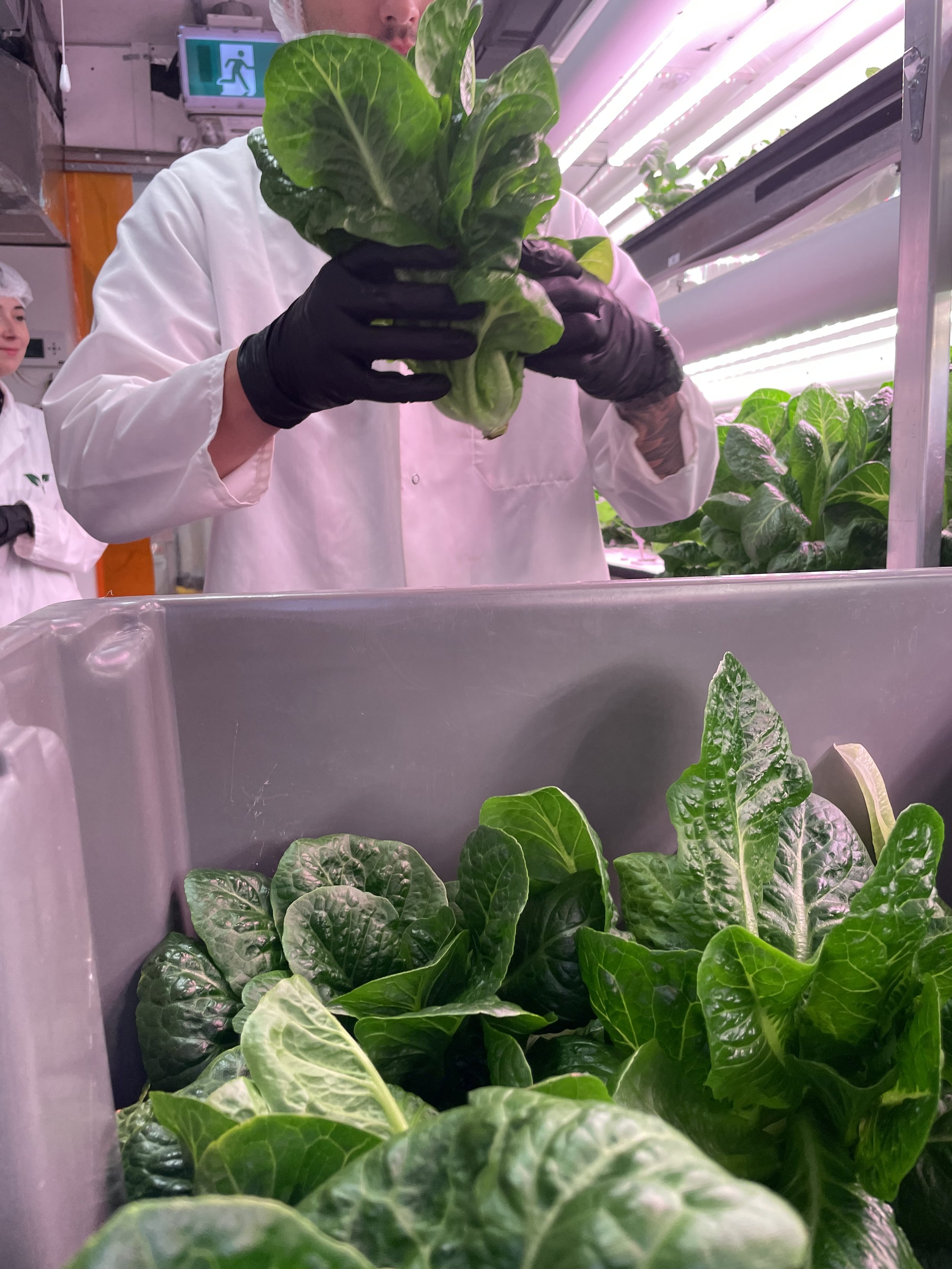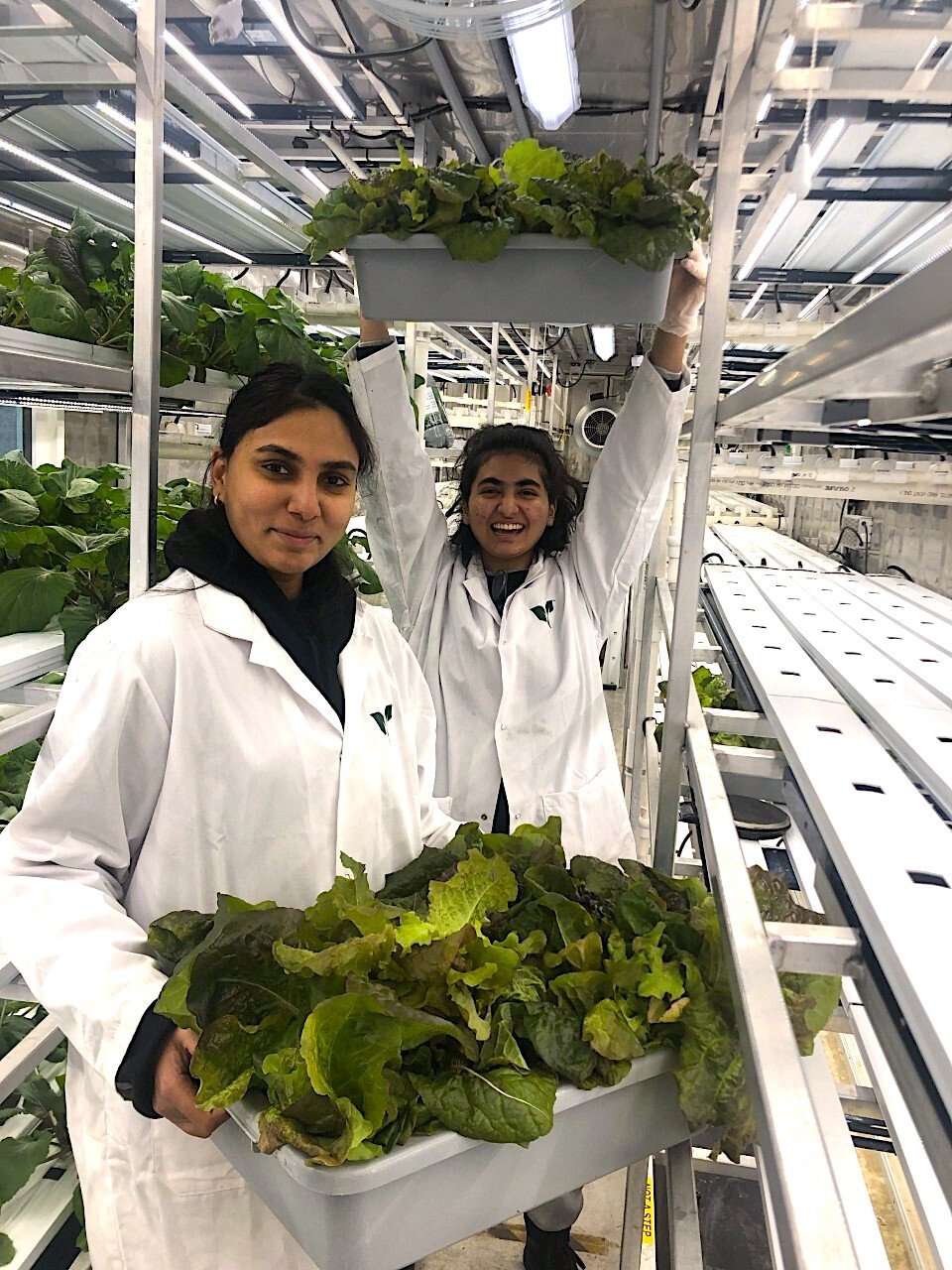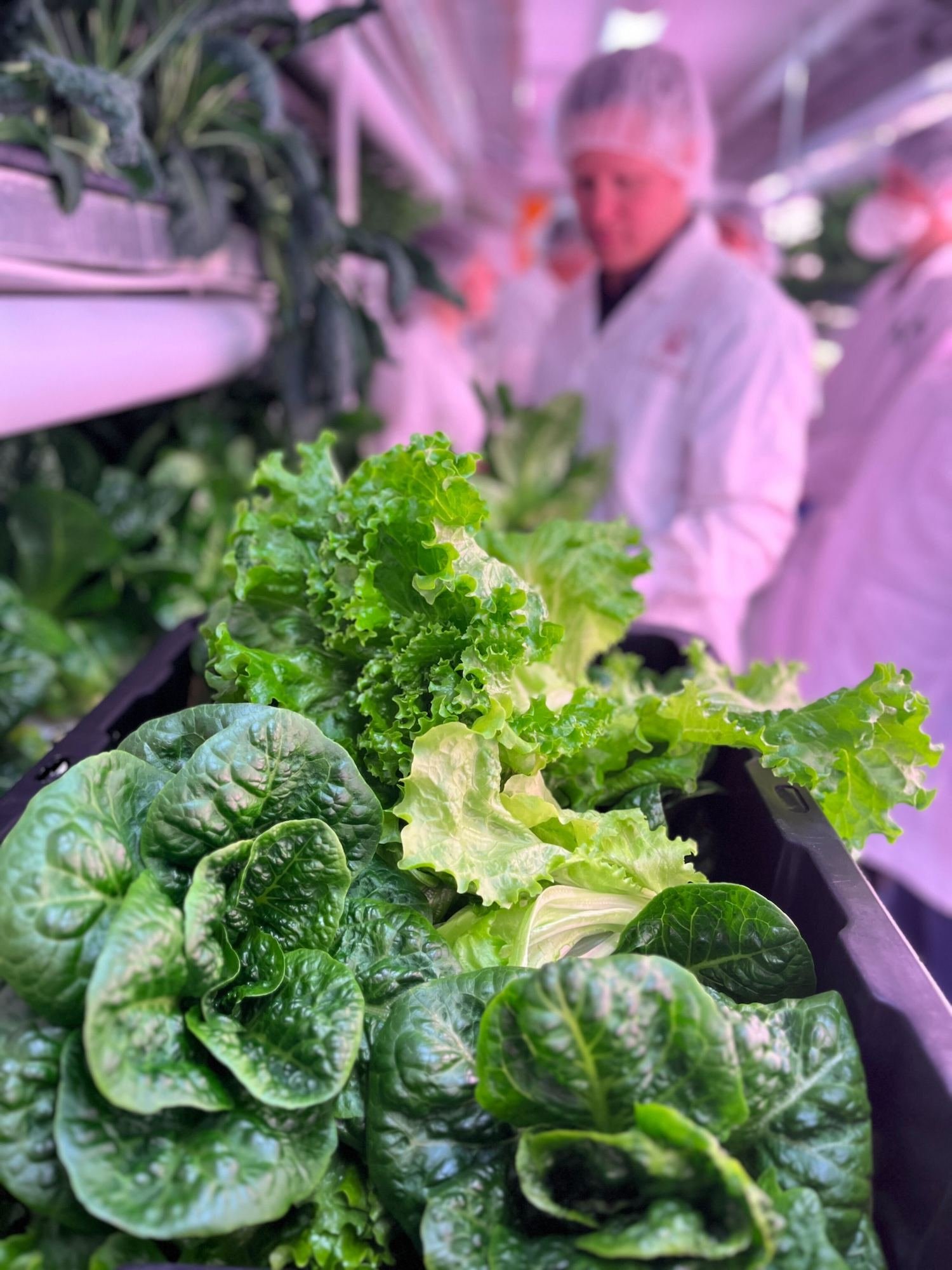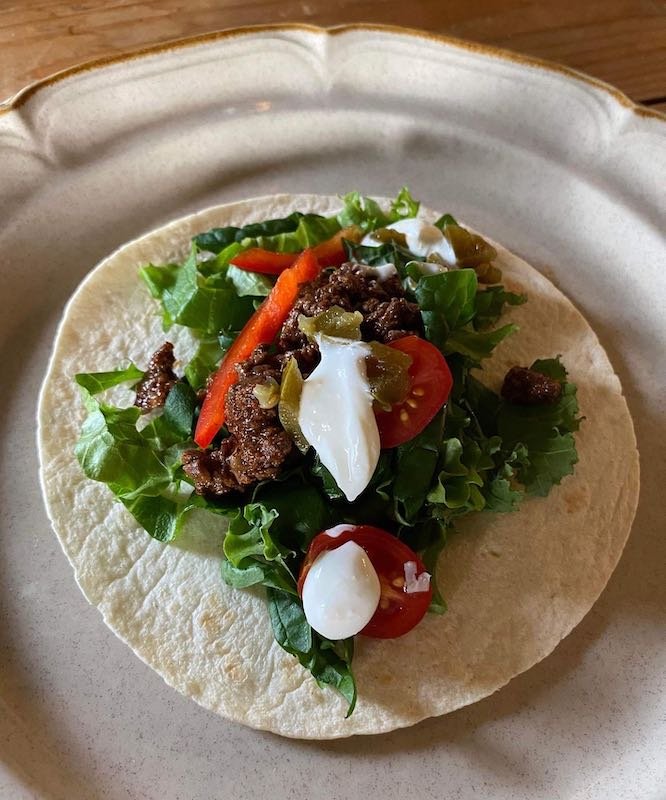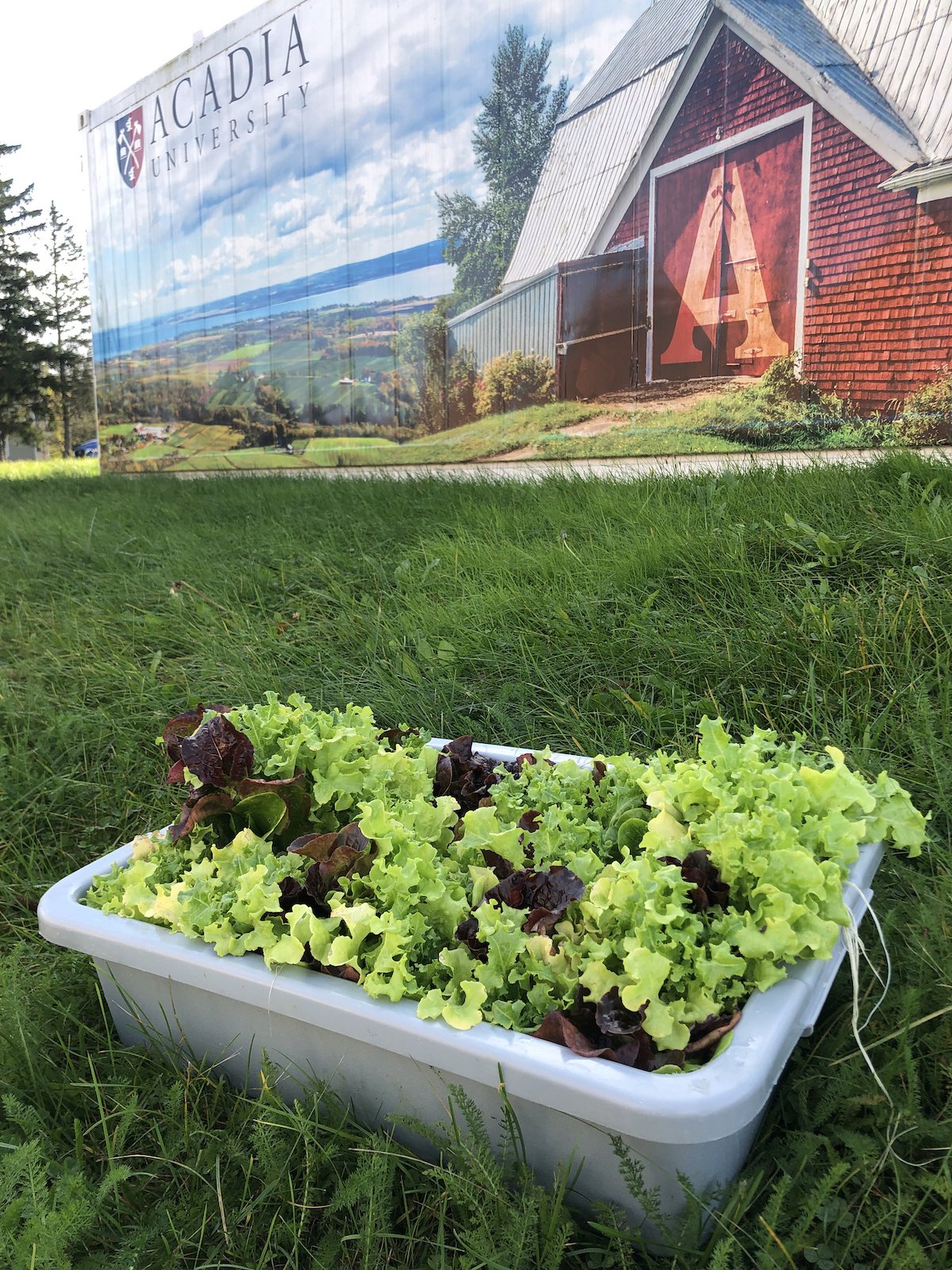Why grow leafy greens?
In this guest submission, Madalyn Higgins, dietitian and sustainability manager at Acadia University, makes the case for leafy greens.
Hydroponic farms are mainly used to grow leafy greens - but what makes this so great?
A common argument against vertical farming is that vertical farms only produce leafy greens (not all, but most anyway) and leafy greens aren’t going to fill our stomachs to solve the real issue of food security.
I was asked to make the case for leafy greens given my role.
I am the Dietitian and Sustainability Manager at Acadia University, and part of this role includes growing fresh greens inside a Growcer hydroponic farm.
As a Dietitian working at a university, I love being able to provide nutritious leafy greens to our students, and as a Sustainability Manager, I love that I can share hyper-local greens grown less than 100m away from our dining hall.
But let’s take a look at what else there is to love about leafy greens.
-
Leafy greens pack a nutritional punch!
Growing up vegetarian I have had my fair share of boring salads (you all know the iceberg lettuce, shredded carrot, and nothing else salad). Although plain iceberg lettuce doesn’t add much value other than a high water content, other greens including kale, spinach, or romaine lettuces are full of vitamin C for immunity, vitamin K for bone health, and fiber for gut health.
And the nutrition of what we eat is just as important as what we eat.
Unlike the boring salads of my childhood, bright green, nutritious salads can be found everywhere now and for me and Acadia University, the Growcer farm helps us make sure we can continue to provide these nutritious veggies. Adding in leafy greens is a fantastic way to boost the nutritional value of our diets.
2. Leafy greens are so versatile.
In recent years, some leafy greens have been part of trends (kale chips anyone?), however, lately I find leafy greens have made their way firmly into our diets in a variety of ways from delicious salads to smoothies to everyday cooking.
People are becoming increasingly aware of the importance of a healthy diet and the impact of food on our health. Given the many health benefits of leafy greens, it makes sense that people are turning more to these foods for their health.
3. Leafy greens are a great starter veggie!
Not everyone loves vegetables and leafy greens can be a great way to ease into veggies when you aren’t sure where to start.
As a Dietitian, I love thinking about ways to add in greens because when it comes to changing our behaviors and building healthier eating habits, I always like to think about what we can add rather than what we can take away.
With leafy greens, the many ways to enjoy them makes adding them in easy. If someone isn’t a fan of salads I might suggest sneaking them into a sandwich, adding them to a smoothie, or even blending them sneakily into pasta or pizza sauce.
I also like to think about vertical farming this way. People often talk about how we need to change our food system and things we need to stop doing such as pesticides or monoculture farming. Although this is one way to think of things, I also like to look at how we can add in new ways of growing food? Vertical farming, organic farming, and small scale farming aren’t necessarily removing anything from our system but rather adding in new, and beneficial methods to our systems.
Moose tacos.
Chicken BLT salad.
Moose and bok choy.
Extra greens are donated to Acadia’s campus food cupboard where students can choose commonly stocked items such as pasta, cookies, canned soups, and during a donation week - fresh vegetables.
4. Growing locally helps us reduce the need to transport leafy greens from across North America.
With most of the produce we eat in Canada travelling over 1,500 km before it gets to our plate, we are helping to reduce our transportation emissions by growing greens >100m away from our dining hall.
Plus not spending all that extra time in transit means our greens are extra fresh and last longer.
One harvest of swiss chard we had lasted weeks in our fridge and our chefs love that being able to leave the roots on our greens allows them to last 2-3 times longer than greens we buy elsewhere.
5. Extra greens are donated to our campus food cupboard!
Although leafy greens do not provide the most energy per serving, they do provide a lot of nutrients and are an item very rarely available within food banks.
Sharing fresh greens with our food cupboard increases the choices available to the students. Students are still able to choose more commonly stocked items such as pasta, cookies, or canned soups, and when we donate, they have the extra option of some fresh veggies.
With vegetable prices in Canada showing a 13.6% increase in 2022, these food items are becoming increasingly unaffordable to students and we aim to provide as many as we can. Leafy greens and our donations are not enough to solve the problems of high food costs and food insecurity, but are just one piece of the puzzle.
Although growing our own food takes a lot of time and effort, I consider myself very fortunate to be able to work and learn in the Growcer farm. Whether I am delivering greens to the chefs, providing a donation to the food cupboard, or eating a salad made with greens I grew, I love combining my love for nutrition and sustainability by growing food for my community.
Meet the grower: Madalyn Higgins
Madalyn Higgins is a Registered Dietitian from Nova Scotia. She currently works as a Dietitian and Manager of Sustainability with Acadia Dining and is the lead grower for their onsite hydroponic unit. She loves food and is very passionate about sustainability making working with the Growcer a perfect fit!


